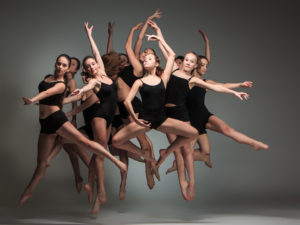
The cardinal directions – up and down, right and left, forward and backward – form our most basic cognitive map of the space around the body. But according to Laban, the first fact of space-movement is “innumerable directions radiate from the center of our body and its kinesphere into infinite space.”
In other words, our cognitive map of space is highly simplified. Real movement through space is much more complex, full of deviations and deflections from the cardinal directions.
Laban engaged in a detailed yet patterned study of these innumerable lines of motion. And this is the fourth reason to study Choreutics – it allows us to explore, both physically and mentally, the richness of options in the kinesphere.
Laban introduces the deflected directions and several spatial sequences along these lines of motion in Part 1 of Choreutics. But in Part 2 there are many more sequences.
The transverse and peripheral forms in Part 2 are seldom taught today. And that is why I am decoding these forms. How do they enrich and extend our current understanding of Choreutics? Find out more in the upcoming MoveScape Red Thread Seminar.
